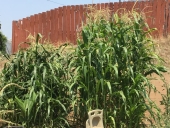At the risk on getting my knuckles rapped upon by the admin for not putting this post in the blatant advertising section, I just wanted to let you know about this book by Linda Runyon
HERE. If you don't know who she is, take the time to look her up. She is an amazing woman who can eat off the land, and has for many years. She has many useful foraging books on that site.
My thinking is that if we can change the way we think about what is food (i.e. trees), we can rethink "what is a Food Forest" too.
This is the description about the book...
"The smell from pine goes so deep in my memory it seems to have been with me forever. The sounds of the wind in the needles is one my ears strain to hear in each and every gust of wind. It seems I was born under a tree when I was taken to the Adirondacks when I was so very, very little. Three months of age and parked on a blanket or carriage under the trees’ arms, trees have always been ALIVE to me!
The story had been written many times when the Adirondack night blew winds causing temperatures to dive to 30 or 40 degrees BELOW zero, and all the canning jars burst and I was completely out of my normal food supply for the winter. I started my usual prayer with deep desperation – I asked God, "OK now that the food is gone, what do I do next?" Through my fear, I always received an answer in words typed across the forefront of my brain sorta above my eyes. There was no sound to the answer, just emphatic letters WHAT DID THE IROQUOIS DO FOR CENTURIES IN FROZEN WINTER? I was off and ploughing through deep snow in the woods for a pine branch. That was my first scraping of bark and taste of chewy-when-hot, stir-fried with garlic salt; Shredded bark!!
Parts of trees, such as the frozen buds caught in winter’s grip, were eaten in more than one way that winter, and I added other types of trees along the way. Frozen sap from balsam and pine became the CANDY for our delicacy in the winter.
In spring, the answers came faster than I could cook them. We ate raw throughout our working day. Thus, the tiny leaves and buds of MAPLE, BEECH, BIRCH and the fruits of the trees & how to use them. NOW, the world was complete for me.
I WAS at peace with my whole environment. Below GROUND, ON GROUND and NOW WAY ABOVE GROUND, the supply was ENDLESS, and still is for all of us. I knew then how my predecessors made it through the winter.
I hope you ENJOY Eat the Trees! I know I enjoyed living the homestead memories of tree food!"
Then another reader's synopsis...
"The book covers the trees that were important to Linda’s experiences in her homesteading years: pine, birch, balsam fir, maple, willow & beech. It absolutely covers descriptions and serves as a guide to foraging these important plants. Edible parts, harvest tips, processing, nutrition information, uses & ideas are also covered. Linda always shares her stories about her past, and for those who love them, she doesn’t disappoint in this book either. Also included is a study guide for self-study or home schooling that will really serve to increase familiarity with these majestic food sources."
I just ordered my copy. I'll give my own review once I have read it.










